The wheels that came installed on your vehicle are designed to perfectly fit your vehicle’s suspension, gearing, and bodywork which can affect ride quality and vehicle performance. But that doesn’t mean you can’t have different wheels or rims installed on your car or truck. To understand what wheels will work for your vehicle, we’ll take a look at rim sizes and some basic measurements.
There are many reasons you might want to switch out your rims. Maybe you want an extra set of wheels and tires for easy installation every winter, or you’re looking for added performance and handling. You might even be going for a specific look, including sleek and stylish or rugged and cool. Whatever your reason, it’s important to note that getting the wrong wheel setup could cause a vibration, or some rubbing on suspension components or vehicle body parts.
Les Schwab Tip: Before you change the tire sidewall height, tread width, or rim size on your vehicle, talk to the experts first. We’ll help translate the difference in RPM, tire speed, load index, and speed rating and how it will or will not fit with your vehicle’s suspension, gearing, and bodywork.
First, start with the wheel size for your vehicle. You can find that on the sidewall of the tires on your original wheels or the inside frame of the driver’s door. Check out Tire Size Explained (Reading the Sidewall) for more.
The wheel diameter (in inches or millimeters) is the fifth set of numbers and letters. What do rim size numbers mean? This number represents the distance between the two bead seat areas where the tire is sealed onto the wheel.
The wheel size also includes its width and offset. The width is the distance from each bead seat (from inside to the outside). The offset determines how the wheel and tire set aligns with the wheel well.
The offset is how far inward or outward the mounting surface is in reference to the center-line of the wheel. The center-line is calculated by simply dividing the wheel into two equal halves. Les Schwab has the tools to accurately measure your center-line.
The center-line is calculated by simply dividing the wheel into two equal halves. Les Schwab has the tools to accurately measure your center-line.
The offset is how far inward or outward the mounting surface is in reference to the center-line of the wheel.
Here's how offset determines the look of your rims. If the hub mounting surface is in front of the center-line, your rims and tire will be pulled inward. This is called positive offset.
If they are behind the centerline, your rims and tire will stick out from the body of the vehicle. This is negative offset.
Les Schwab Tip: Measuring the offset on your vehicle is difficult without removing the tire and wheel. Consult the pros to get the right fit.
To ensure a set of rims fit properly on your vehicle, you’ll need the hub size on your car or truck as well as the wheel center bore measurement and number of wheel studs (as well as the distance between those studs).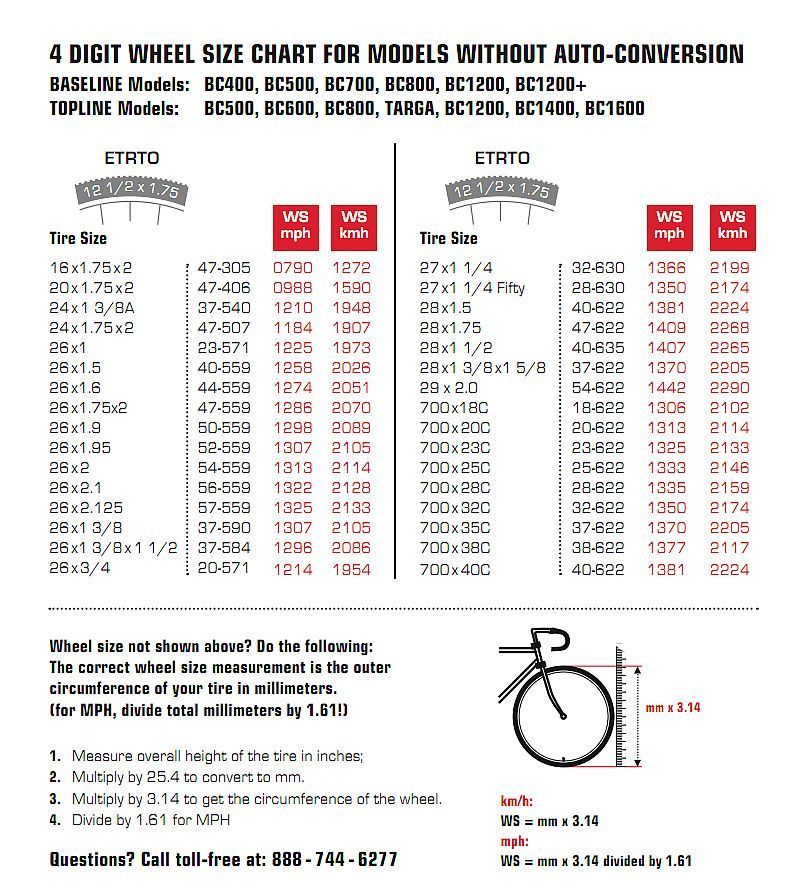 Les Schwab has those measurements for your vehicle, including bolt patterns.
Les Schwab has those measurements for your vehicle, including bolt patterns.
Most vehicles come with a 4-, 5-, 6-, or 8-lug pattern. These bolt patterns, which are specifically spaced, help narrow your wheel or rim choices. While counting the number of bolts on your vehicle is important before buying a set of rims, it’s vital the wheels you choose match the spacing between the wheel studs on your vehicle.
To measure a 4-lug pattern on a set of rims, measure from the center of two holes across from each other. For a 5-lug pattern, measure from the outside of one wheel stud hole and the center of the opposite. And for 6- and 8-lug patterns, measure from the center of one hole to the center of the opposite wheel stud hole. You’ll either need this measurement in inches or millimeters, depending on the wheel manufacturer.
Remember, there’s no need to take these measurements on your own. The pros at Les Schwab do it every day and can ensure you get the right rims for your vehicle.
At Les Schwab, we take pride in our custom wheel expertise. Stop by and ask about new wheels for your vehicle. We’ll show you all of your options, whether you’re going for a new look, a boost in performance, a new set of wheels for your winter tires, or simply as a replacement of your current set.
Find A Store Near You
Easily the most challenging cosmetic issue facing your car building project is wheel and tire selection, along with proper fitment. Few things are more discouraging than spending a fortune for new wheels and tires only to discover they do not fit, or perhaps they just don’t look right on your vehicle. Wheels that look sharp on a Camaro may not hold water on a Chevelle. Wheel sizing is also critical. Some enthusiasts want as much wheel and tire as they can stuff in a wheelwell. However, sometimes too big is just too big, making your Camaro look like something of a circus wagon instead of a fierce muscle car.
Chris Plump of American Racing is here to set the record straight on how to measure and select a wheel for a perfect fit. Chris says to never to guess, but know exactly what wheel and tire combo is going to fit your Chevy and be user friendly where the rubber meets the road. You shouldn’t go at wheel and tire selection willy-nilly because this is one of the largest investments you’ll make for your car next to engine and driveline upgrades, and perhaps suspension.
The first order of business is wheel size. There’s wheel width and there’s advertised wheel width. A popular misconception according to Chris is the belief advertised wheel width is wheel width. It isn’t. Advertised wheel width is from bead seat to bead seat. The bead seat is where the tire meets the rim. Actual wheel width is from face to face, meaning from the outermost part of the wheel from side to side.
If you order a wheel based on a manufacturer’s specifications of 8. 00 inches wide, you’re actually ordering a 9.00-inch wide wheel. In other words, an advertised wheel width of 8.00 inches is actually 9.00 inches wide. If you’re cutting wheel fitment close, ordering an 8.00-inch wheel width could get you into trouble when it’s time for mounting. Another issue is sidewall tire bulge beyond the 9.00-inch actual wheel width.
00 inches wide, you’re actually ordering a 9.00-inch wide wheel. In other words, an advertised wheel width of 8.00 inches is actually 9.00 inches wide. If you’re cutting wheel fitment close, ordering an 8.00-inch wheel width could get you into trouble when it’s time for mounting. Another issue is sidewall tire bulge beyond the 9.00-inch actual wheel width.
Backspacing is where wheel fitment and selection gets tricky because everyone has a different interpretation of backspacing and where measurements take place.
Here’s how it is done: Lay a straightedge across the back of the wheel at the lip. Measure from the straightedge to the flange (wheel center and lug holes). This is the wheel’s backspace.
Another hot button item that trips up a lot of us is hub diameter. Take a pair of calipers and measure the hub at its largest point. You want the wheel to fit on the hub nice and snug, but not an interference fit where you feel like you need to force the wheel.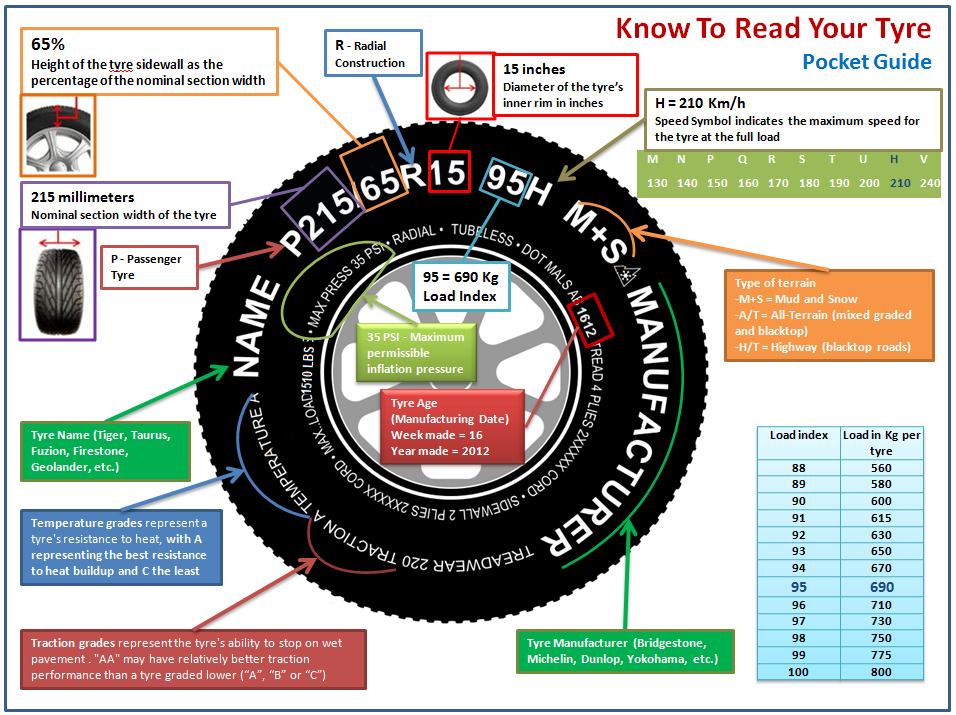 The wheel should glide right onto the hub and stay there. Once you have hub diameter sorted out, check hub length. How far does the hub stick out? It has to be able to fit inside the wheel center cap.
The wheel should glide right onto the hub and stay there. Once you have hub diameter sorted out, check hub length. How far does the hub stick out? It has to be able to fit inside the wheel center cap.
The bottom line with wheel fitment is you must know the overall size of a wheelwell by the time you sit down to place an order with American Racing. The vehicle must be sitting at proper ride height when you begin measuring all dimensions. You must also allow for suspension movement, which can be significant as you cruise down the road and encounter the many irregularities. If you’re going road racing or autocrossing there’s another consideration in the measuring process. How much will your suspension move sideways as you cut the apexes?
Getting Started
There are tools of the trade you’re going to need to properly measure a wheelwell for proper wheel and tire fitment. Here’s what you’ll need:
Straightedge
Yardstick (ideally steel)
Tape measure
Fine thread nuts that fit your lug studs (you may also use lug nuts)
Flat washers of the same size
1. The sheer number of wheel and center combinations at American Racing is stunning because there are so many that can be custom-ordered and made to your backspace and offset in any style you desire.
The sheer number of wheel and center combinations at American Racing is stunning because there are so many that can be custom-ordered and made to your backspace and offset in any style you desire.
2. Chris Plump at American Racing tells us there is a real difference between advertised wheel width and actual wheel width. Advertised wheel width is from bead seat to bead seat inside the rim. Actual wheel width is from lip to lip, which adds at least 1-inch to the advertised wheel width. Also, keep sidewall bulge (width) in mind, which goes beyond actual width by as much as 1 inch depending upon the tire and inflation.
3. Wheel diameter is measured from lip to lip across the wheel’s diameter.
4. Wheelhouse height comes into play as shown from inside the trunk or outside of the wheelhouse. Wheelhouse modifications, such as tubs, will change everything.
5.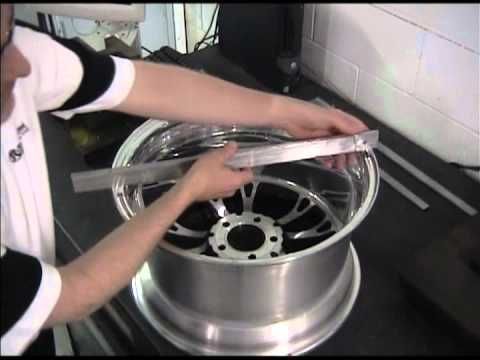 Using a yardstick fastened to the brake rotor hub as shown, measure the distance from the hub to the top of the wheelwell. To get an accurate measurement and proper clearance, put vehicle weight on the axle to get true vehicle ride height. Measure from the center of the wheelwell as well as to each side—three measurement points.
Using a yardstick fastened to the brake rotor hub as shown, measure the distance from the hub to the top of the wheelwell. To get an accurate measurement and proper clearance, put vehicle weight on the axle to get true vehicle ride height. Measure from the center of the wheelwell as well as to each side—three measurement points.
6. Here, Chris Plump measures brake caliper clearance. This can be a slippery slope because there are variations in disc brake packages. You want 0.060-0.100-inch clearance between the wheel and caliper due to thermal expansion of the brake caliper when it is hot. It is strongly suggested you go even greater than 0.100-inch to be safe.
7. Next, measure from the brake hub with a straightedge to the inside of the wheelwell in front or wheelhouse in back. In this case, we’re talking 10 inches.
8. We’re measuring from the hub to the brake rotor flange here.
9. Here’s another way of looking at a wheelhouse. In back, measure with a yardstick/straightedge from the lugs to the top of the wheelhouse at three locations just to make sure you are covered. Make sure you have supported the axle to achieve true vehicle ride height.
10. When it’s time to build a wheel at American Racing, these wheels are precision-checked for runout, which checks the rim for irregularities.
11. This is the wheel assembly turntable. These are shims designed to hold the wheel stationary and on spec in the jig.
12. The wheel is heated as shown to achieve expansion for wheel center installation. The wheel expands, which makes room for installation. The center is positioned and welded.
13. American Racing can produce nearly any wheel size/center combination imaginable.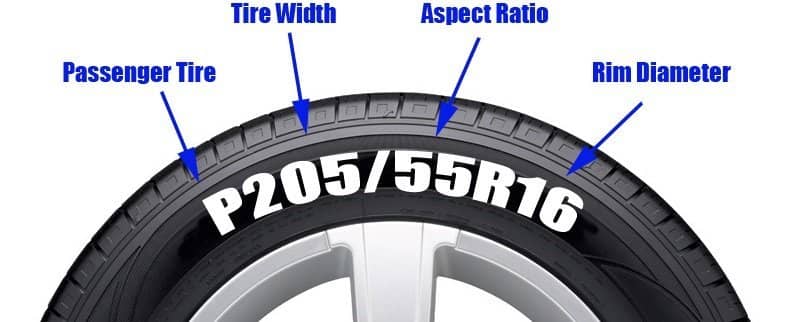 When you visit American Racing, it’s like being a kid in a toy store. Endless selection with great-looking centers.
When you visit American Racing, it’s like being a kid in a toy store. Endless selection with great-looking centers.
14. Here’s a wheel center along with the corresponding order. Once you’ve established exactly what you want in terms of size and style, American Racing builds the wheel to your order. This is why you must measure the wheelwells in great detail as they relate to the axles and brakes. Before you is the birth of a VF502 wheel.
15. A custom-ordered wheel center is placed inside the wheel as shown and readied for welding.
16. The wheel and center are set up in this special jig for welding. Welding is automatic and spot-on perfect.
17. Check it out. This precision-welded wheel and center are good to go for our 1969 Camaro project.
18. How wide do you want? Here’s a custom wheel born for drag racing.
19. All American Racing wheels are dynamic balanced for smoothness. When you receive your set, you can know with great confidence the wheels are true and have been balanced.
20. Our American Racing VF502 Forged wheels are a perfect fit thanks to Chris Plump’s close attention to detail during the measuring process. Measure thrice, build once. This is where you must take your time and check measurements at least three times and write them down. We stress three times because this is too important to screw up.
21. Before you mount tires to the wheels, install the wheels and check the lip-to-chassis clearance to be sure it’s acceptable. In short, check all dimensions when your wheels arrive.
Photos: Steven Rupp
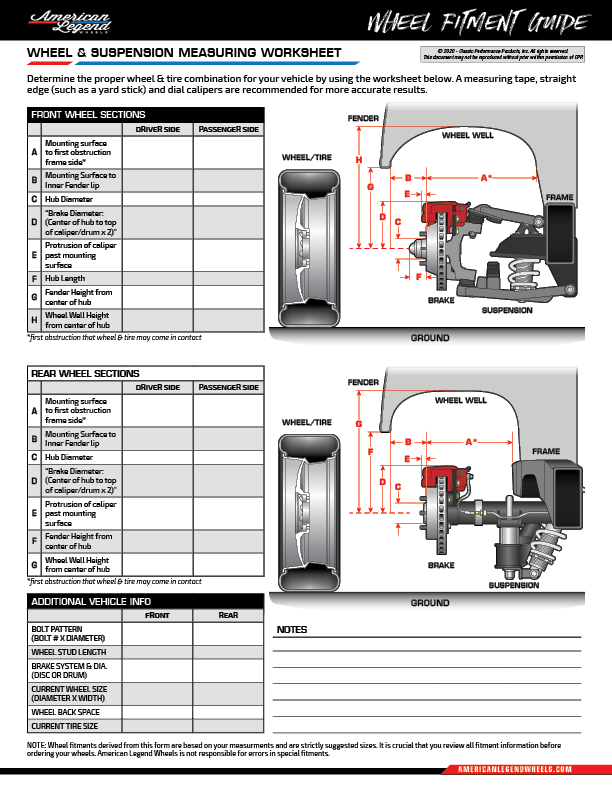 sportek.in.ua
sportek.in.ua Nikolaev bicycle shop "Sportek"
Published: 04/07/2017
Edited: 07/15/2018
From time to time the question arises: “What is the diameter of the bicycle wheels?”
Most often, it pops up if a tire has broken through or new tires are needed for the wheel of an old bicycle. And to the seller’s question “What wheel does your bike have?” Only one answer comes to mind: “round”.
First of all, you need to define the concept of wheel diameter .
For most ordinary people, this is the diameter of the wheel at the outer (outer) border of the tire.
But there is also the concept of rim fit size - this is the diameter of the rim or tire itself along the inner border.
Therefore, it would be a good idea to first understand the tire marking systems adopted in the world in order to speak the same language with the bike shop salesperson. You can read about this in the article "Bicycle tires: sizes, marking types and interchangeability" on our website.
You can read about this in the article "Bicycle tires: sizes, marking types and interchangeability" on our website.
For the sake of brevity, here is a figure explaining what is measured in each labeling system. Therefore, it is important to understand what we measure and what we want to find.
When choosing a new rubber, be guided by it. If there is no tire with exactly the same marking, look at the interchangeability table and select the right size in another marking.
If a new tire is needed a little wider or narrower, check the tire and rim width chart.
If in doubt, talk to the salesperson. He will tell you if it is right for you, both in terms of size, tread, riding style and what kind of roads you want to ride.
This can be done by measuring the radius and multiplying it by two.
For younger students reading this article, I remind you that one diameter consists of two radii.
Only you need to measure strictly from the center of the sleeve, and not from its edges. When measuring, the bike should stand vertically, and the tape measure, putting one end to the ground, keep the same strictly vertically, and not along the spokes of the wheel . Only such a measurement will give the correct value.
The wheel diameter itself can be measured in the same way.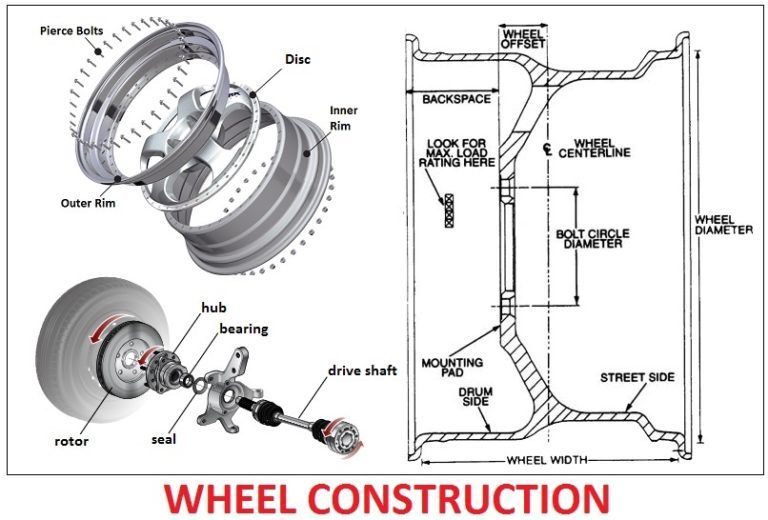 The main thing is to accurately determine its upper cut. To do this, you can take a level and attach it to the top of the tire, and, holding it strictly horizontally, determine the desired size from the tape measure.
The main thing is to accurately determine its upper cut. To do this, you can take a level and attach it to the top of the tire, and, holding it strictly horizontally, determine the desired size from the tape measure.
After that, we convert it from mm to inches. To do this, divide it by 25.4 (1 inch = 25.4 mm) and calculate the size in inches. The result can be rounded up to standard inch wheel sizes.
For example, if the measurement is 720 mm, divide by 25.4 to get 28.346 inches. So, most likely, the actual size of the wheel, taking into account the accuracy of the calculations, is 28”.
In principle, the rim diameter can also be measured in the same way.
Just pay attention to the difference between what is measured on the outside of the tape measure and the fit size of the rim.
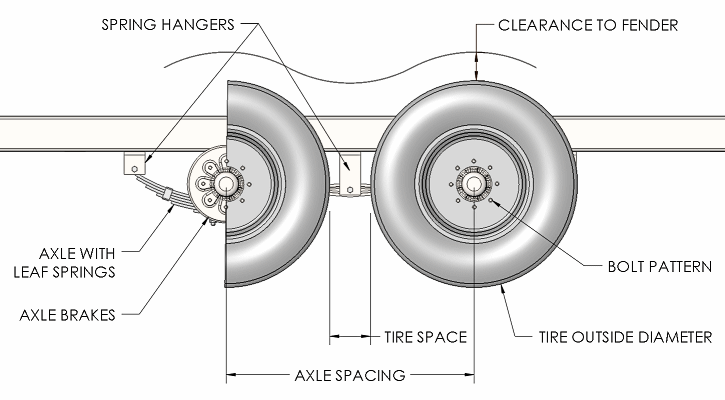 How to calculate the circumference of a bicycle wheel is described on our website in a separate article (Second method).
How to calculate the circumference of a bicycle wheel is described on our website in a separate article (Second method).
And knowing it, it is easy to calculate the diameter. To do this, the circumference in millimeters must be divided by the number "Pi" (3.14). Once you get the diameter in mm, divide it by 25.4 to get the diameter in inches. Similarly to the previous paragraph, the result will have to be rounded to the nearest whole number in inches. The more accurate all measurements, the more accurate the result and the less rounding.
Comments (2)
x
Contents
wheel sizes. This could be as early as when you bought the bike, or when you first changed a punctured inner tube and tire. How important is it to know the geometric parameters of the “running” bike? Nothing less than sorting out the bushing or lubricating the chain.
This could be as early as when you bought the bike, or when you first changed a punctured inner tube and tire. How important is it to know the geometric parameters of the “running” bike? Nothing less than sorting out the bushing or lubricating the chain.
Determining the diameter of a bicycle wheel is very easy. We will talk about this in our article. Of course, this parameter is likely to be recognized precisely from the moment of purchase or in the process of “studying” their two-wheeled friend. Nevertheless, suddenly he is unknown for some reason, for example, they let the bike ride for a while, and then the tire went flat, and it was necessary to install a new camera.
The geometrical parameters of bicycles differ from each other according to a strict pattern - this also applies to the size of the frame and the diameters of the wheels. Let's start with a size chart:
The first column shows the traditional wheel diameters in inches and millimeters. The wheel is measured with the tire. To find the rim size, subtract the tire height times two. Standard rim sizes are listed in the second column.
The wheel is measured with the tire. To find the rim size, subtract the tire height times two. Standard rim sizes are listed in the second column.
Bicycle wheel measurement systems:
The International Organization for Standardization (ISO) has implemented a universal wheel measurement system to avoid confusion. It is followed by all bicycle manufacturers. The dimensions of the wheels are made up of the diameter of the “clean” rim and the width of the tire profile.
When choosing new tires, you need to know the fit diameters of the rims - these numbers on the tires must match them. This will come in handy when switching to a different tire profile. In everyday life, the wheel is measured in inches, and it is more convenient to give dimensions in inches. And by the size of the wheel, you can also determine the type of bike - walking, mountain or road.
The very essence of measurement is to obtain numerical data - centimeters, millimeters or inches. Can be done in several ways:
Can be done in several ways:
The easiest way is the first way. We take a centimeter or tape measure and put the bike vertically so that it does not fall. Attach the ruler with zero strictly to the axis of the sleeve and draw to the edge of the tire. This will be the radius of the wheel in centimeters. Then multiply by two to get the diameter. To get millimeters, you need to multiply by 10, and inches by 2.54.
Measurements from bottom to top will be more accurate
We will measure the diameter of the rim and the height of the tire profile according to ISO. This method may be needed if it is necessary to put a tire of a different profile - several types of tires can be selected for the same rim diameter.
Only measure from the center of the hub to the outer edge of the rim. Knowing the radius, multiply it by 200 - we get the diameter in millimeters. And on it we select another tire.
And on it we select another tire.
The third method shows how to determine the diameter in terms of the circumference. For these purposes, you will need a cable and tape measure. We wrap the tire with a cable, make a mark at the junction with the beginning of the cable. We straighten and use a ruler to measure the distance from the beginning of the cable to the mark. This will be the circumference.
You can also:
Do not be afraid that for large wheels this value will exceed 200 cm. To begin with, we divide it by 3.14 - we get the diameter in centimeters. And then divide by 2.54 to convert to inches. Actually, it's so easy to find out what size bicycle wheels are.
Actually, it's so easy to find out what size bicycle wheels are.
Ruler measurements will most likely result in fractional values, such as 28.23 inches. We round up to integer values, taking into account the existing diameters.
And now a little about tires and their meanings. According to the classical system, dimensions are applied in this order: wheel diameter in inches / tire profile width.
By analogy, the same dimensions are applied to the tubes: 20 - overall size, 1.75 - tire height in inches
According to the international ISO system, the same parameters are stuffed onto the rubber in the opposite order - first the profile height, then the rim diameter. Values are in millimeters. For the same tire or tube 20/1.75 in ISO it will look like this: 44.4/406.
The table below shows the ranges of tire profile heights for rim fit diameters: